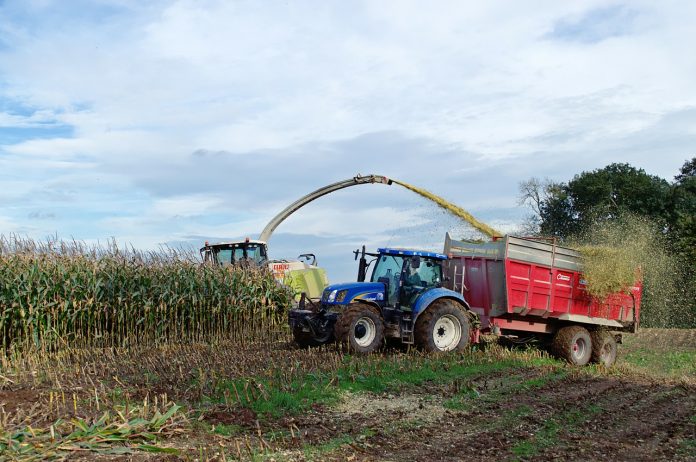By Dwight Roseler and Jason Hartschuh
A high-performance football coach knows the work is done in the weight room and practice field before the opening game kickoff. In football, there are several chances to make course corrections in-season. Unlike football, there is only one chance to get corn silage harvest done correctly and safely.
Harvest will begin soon, and proper preparation is critical to keep all people safe and silage stored properly. Corn silage quality, proper fermentation and assigning a corn silage price is a top five factor in profit for dairy farms.
Safety
People’s safety is top priority during harvest season. Send everyone home each day healthy and safe. Silage harvest involves multiple pieces of equipment and drivers moving trucks, tractors and choppers in various patterns. Coordinated traffic patterns and highly visible safety vests for all workers should be mandatory. Keep small children and uninvited farm guests away from busy farm driveways.
Silage fermentation gases are dangerous. Use all precautions after filling upright silos to prevent exposure to silo gases. Get proper rest, keep hydrated with adequate water and take regular breaks to avoid operator fatigue.
Inspect and update all safety features on silage tractors, trucks and choppers. Clean and replace worn-out lights, backup beepers and slow-moving vehicle emblems. The silage chopper should have both an ABC dry chemical and a water cannon foaming agent extinguisher on board. Silage equipment dust, debris and fodder should be blown off daily to keep equipment free of any excessive dust or plant material, potentially increasing the risk of fire. The silagesafety.org website has resources for safety training as well as equipment operation and maintenance.
Chop length
Corn silage chop length should be adjusted based on whether the silage is kernel processed. A chop length of 3/4 to 1 inch for kernel-processed silage is correct. Non-kernel processed corn silage should be chopped to 3/8 to 1/2 inch particle length. It is recommended to have silage kernel processed as research has shown a benefit of 4 pounds of additional milk per cow from kernel-processed silage. The kernel roller gap set to 1/8 inch is correct.
Monitor the chop length and kernel processing throughout the bunker or silo-filling process. Assign the responsibility to run a Penn State shaker box and kernel processing evaluation on incoming loads of silage throughout the time during silo chopping. Silage variety and planting date can influence kernel size, therefore affecting the processing score. Checking processing scores in each field will improve your processing consistency.
Summary
Prepare your silage team now for the fall silage Super Bowl game as you only have one time to get it right. Prepare the equipment, set and monitor the correct chop length and kernel rolls, keep people’s safety first, review equipment safety and update as needed.
(Dwight Roseler is an adjunct professor with the Ohio State University Department of Animal Sciences and Jason Hartschuh is a dairy management and precision livestock field specialist for Ohio State University Extension.)













